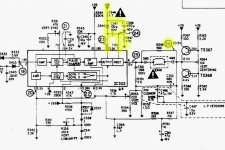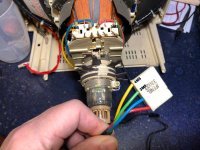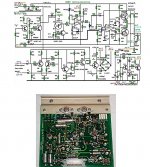Witchy
Experienced Member
Hello folks,
I've got this 1084 on the bench, sent to me because it went CRACK and the picture collapsed so there's obviously a fault in the vertical deflection circuit. Looking at the board the culprit was R346 which according to the schematic is a 4.7ohm resistor. Something prior to it is feeding it too much and it burns up, I verified this by replacing it and filmed it smoking.
Has anyone come across this before? Given the rapid failure of R346 when it's replaced how can I go about measuring the rest of the circuit other than removing components and testing them out of circuit?
Here's the relevant part of the schematic:

Cheers!
I've got this 1084 on the bench, sent to me because it went CRACK and the picture collapsed so there's obviously a fault in the vertical deflection circuit. Looking at the board the culprit was R346 which according to the schematic is a 4.7ohm resistor. Something prior to it is feeding it too much and it burns up, I verified this by replacing it and filmed it smoking.
Has anyone come across this before? Given the rapid failure of R346 when it's replaced how can I go about measuring the rest of the circuit other than removing components and testing them out of circuit?
Here's the relevant part of the schematic:

Cheers!


